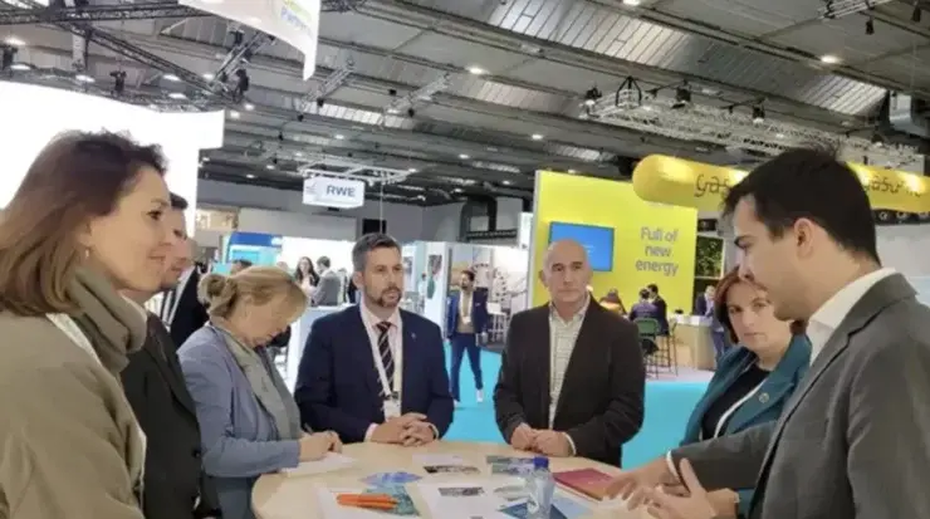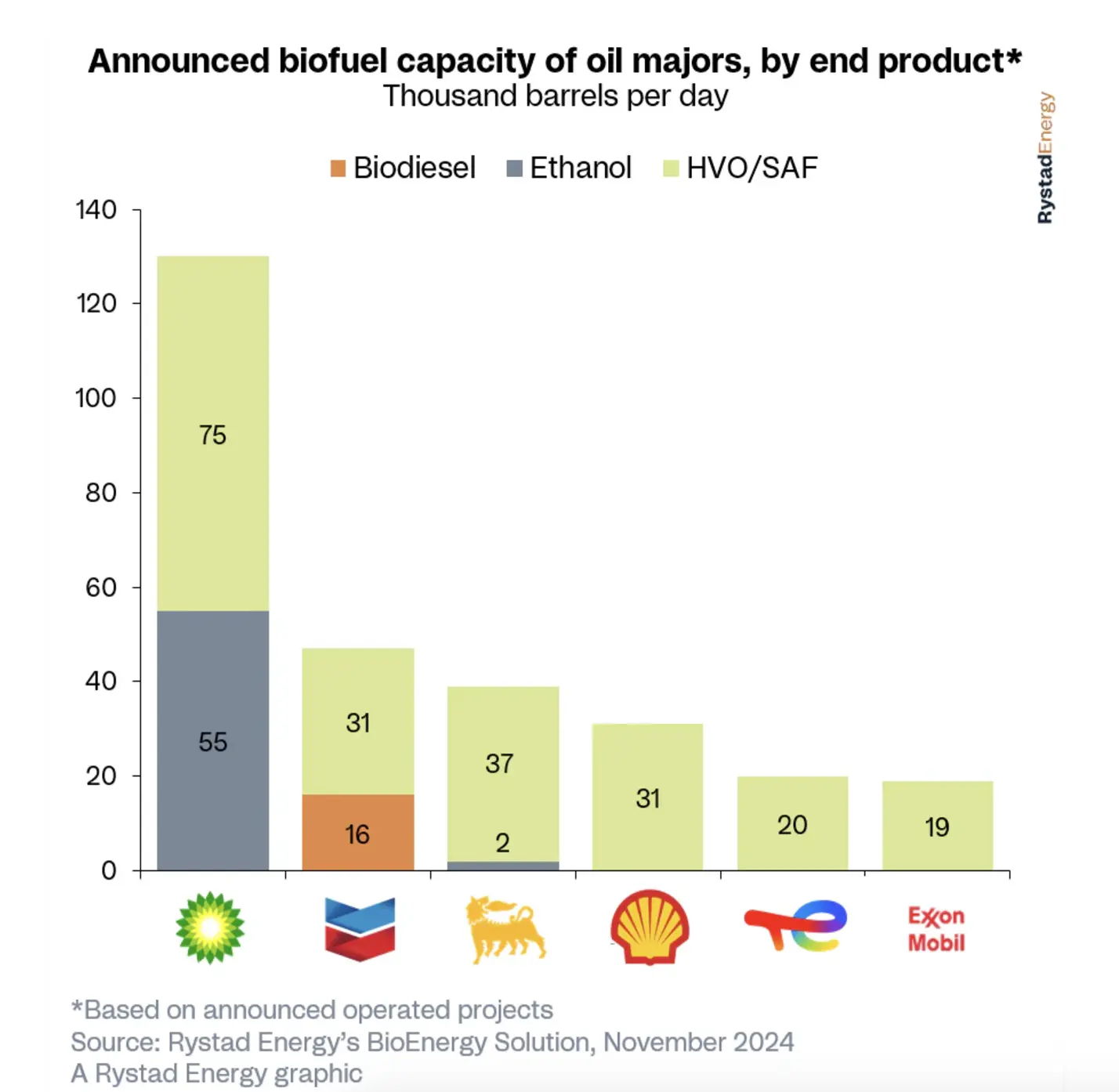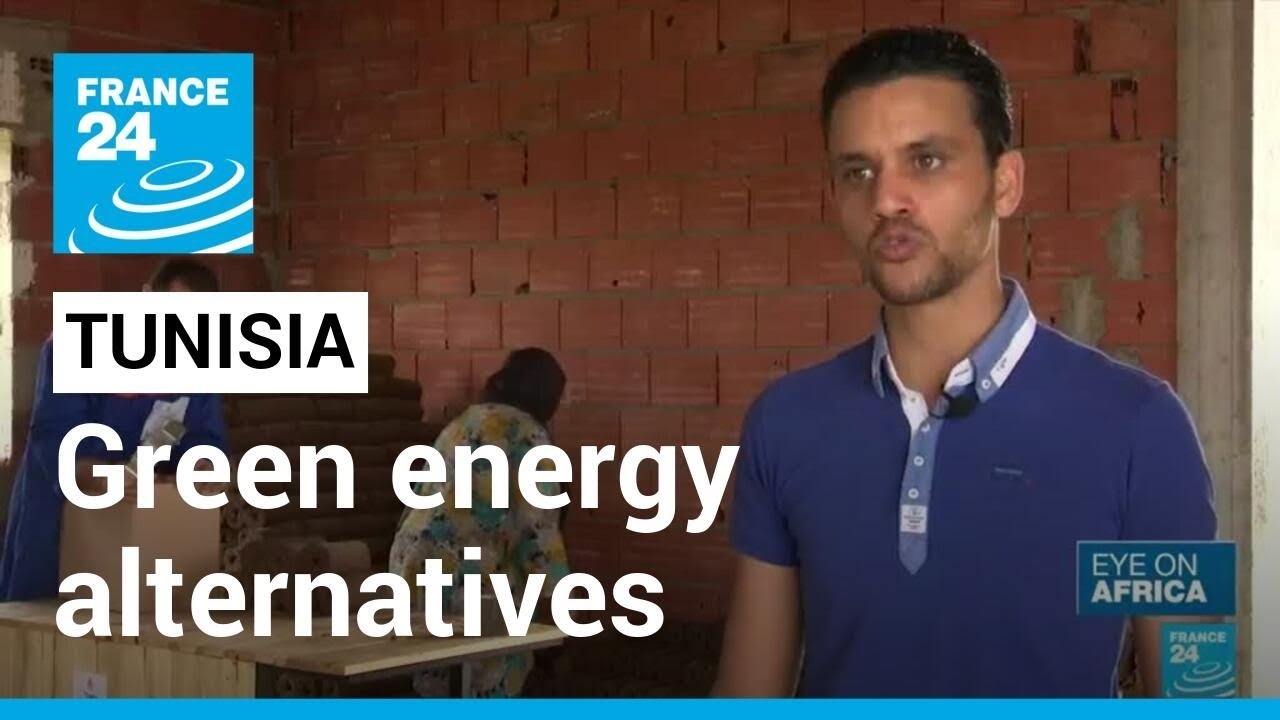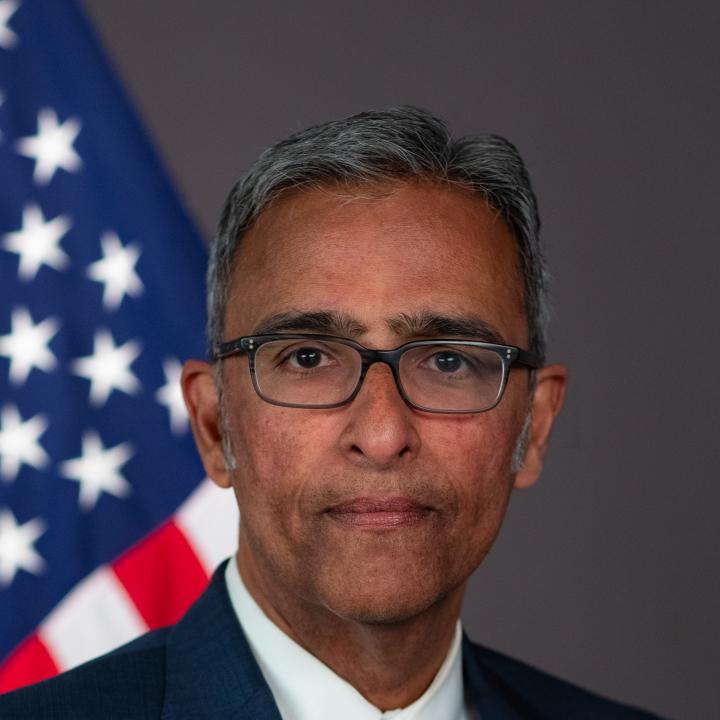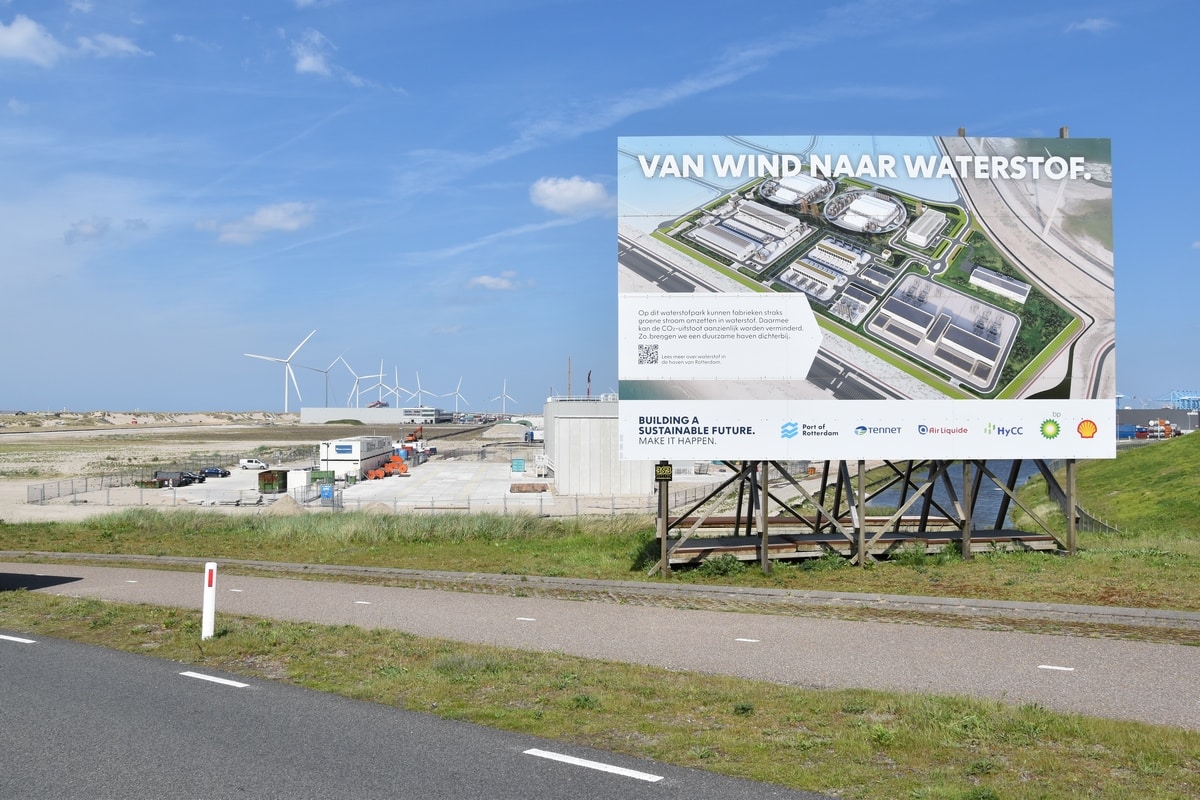
Europe’s largest port wants to become sustainable
“How quickly can we implement the energy transition?” This question has been posed for some time by the Port of Rotterdam, the largest European sea freight transshipment point. In the past – and still today – the huge industrial area was shaped by the oil and gas industry. Among other things, four large refineries are located there, which now need to be decarbonized. Boudewijn Siemons, CEO and COO of the Port of Rotterdam Authority, stated, “If it can be done electrically, it should be – with hydrogen otherwise.”
To drive this transformation process forward, together with the gas supplier Gasunie, the port company is initially dedicating itself to infrastructure, because “infrastructure is an enabler,” as Gasunie CEO Willemien Terpstra states. One of the main projects is a new pipeline system – for hydrogen and carbon dioxide. The new construction of the Hydrogen Backbone (H2) as well as the Porthos pipe system (CO2) started in October 2023 with the groundbreaking ceremony by the Dutch king Willem-Alexander.
The port is receiving significant political support. “I see a government that is really working to remove obstacles,” says the port head. This also benefits Germany, where a large proportion of the energy supplied will be forwarded. Accordingly, the Netherlands also sees Germany as the main customer for hydrogen –particularly the state of Nordrhein-Westfalen.
The time of waiting is over, because large coal-fired power plants in the port will be shut down in 2030 (see Fig. 2). However, eliminating CO2 emissions from fossil fuels is only one path to reducing carbon dioxide emissions 55 percent by 2030. In addition to increasing efficiency, negative CO2 emissions will also be necessary, so the carbon dioxide produced must be stored using CCS (carbon capture & storage). “If we want to reduce CO2 emissions, there is no way around CCS,” according to Siemons.
Fig. 2: The coal-fired power plant located behind the substation will be shut down by 2030
The goal is CO2 neutrality by 2050. By then, the approximately 100 million tonnes of crude oil imported annually in Rotterdam are to be replaced by other media. For example, around 15 million tonnes of oil are to be substituted by 20 million tonnes of hydrogen, whereby about 90 percent of the hydrogen required will be imported.
As to the question of how long the planned “temporary use of blue hydrogen” could last, the answer came clear: “Decades.” Blue hydrogen or “low-carbon hydrogen,” as it and other non-green H2 compositions have been called for some time now, are to serve as the initial spark for building an H2 economy. It is already clear today that the associated lock-in effects will be considerable, as the billions invested are to be amortized over at least 15 years.
The capture of CO2 is only part of the task to be accomplished. Extracting small amounts of carbon dioxide from a gas stream is still relatively simple and efficient, but the larger the percentage is to be, the more complex it becomes. The port has initial experience in this area: For example, CO2 is already being captured there and used in greenhouses to improve plant growth. Ulrich Bünger from the energy consulting company LBST is nevertheless skeptical and stated in Rotterdam that CCS is still a long way from being where it is supposed to be. There is “hardly any experience,” according to the energy expert, while the impression is given that the technology is tried and tested.
Infrastructure is key
For the infrastructure and its operators, it doesn’t matter how the hydrogen was produced. Willemien Terpstra, CEO of gas transmission company Gasunie, said on the matter: “We are ready to transport any color.” Accordingly, Gasunie already made the final investment decision for the pipeline construction last year, although only five percent of the capacity has been sold so far, as the appointed CEO since March 2024 has explained. Of course, the government’s strong commitment was decisive here, which is contributing 50 percent of the costs. The aim is to jointly complete the pipe system by 2030, which will then be able to provide 10 GW of power.

Shell refinery in Port of Rotterdam
To H2-international’s inquiry of how the hydrogen would be transported to Rotterdam, CEO Boudewijn Siemons named all the options: ammonia, methanol, LH2 and LOHC – No variant is excluded from the outset. When asked whether the port company could handle large quantities of ammonia safely, Siemons initially hesitated briefly, but then replied confidently, “Yes, I think we can do that. I’m pretty sure of that.” At the same time, however, he conceded that “not every place in the port” is suitable.
As ammonia tanks have been present in the port for a long time, the corresponding expertise already exists. The plan is to triple the storage capacity for ammonia in the next few years compared to 2023. However, such a change in fuels and energy storage media is unlikely to significantly alter the appearance of the world’s eleventh largest port, the operators are certain. Even though the media will be different, many installations will look similar to before. It is already clear today that an infrastructure for LOHC and LH2 is also being developed. Corresponding partnerships with Chiyoda and Hydrogenious already exist.
200?MW electrolyzer from Shell
The highlight in the harbor, however, is Holland Hydrogen 1 (see Fig. 1), a 200?MW electrolyzer that is dimensioned in such a way that the green hydrogen produced with the help of wind turbines can then replace the amount of gray hydrogen so far required in the port. The electricity required is sourced from a 759?MW offshore wind farm (Hollandse Kust Noord) north of Rotterdam, which is directly connected. In order to meet all EU regulations, H2 production (approx. 20,000 tonnes per year) will follow the respective wind supply, even if this means that the electrolyzers cannot run 24/7.
For this project, for which the final investment decision has already been made, Shell received this year’s Green Hydrogen Project Award during the World Hydrogen Summit. The area on which the in total ten 20?MW electrolyzer modules from Thyssenkrupp Nucera is to be installed is what’s called “proclaimed land” that was wrested from the North Sea. Where the conversion park is being built used to be water. However, it is likely to take until the end of the decade before it goes into operation. In the future, also Holland Hydrogen 2 could follow – a second area with likewise 200 MW. By 2030, this could already be 2 GW.

The H2 pipes (black) and the CO2 pipes (white) are sometimes only 40 cm apart
The corresponding H2 pipeline, which is currently under construction, will then connect the H2 production facility with the various refineries and other customers. Sufficient wind for green hydrogen production is available in Rotterdam. In the port area alone 300 MW of wind power are installed. As this is more electricity than is needed, a large stationary accumulator has already been installed, to be able to temporarily store at least some of this green electricity.
The hydrogen tubes measure 1.2 m (48 inches) in diameter and are pressurized with 30 to 50 bar. The construction of the first 30 kilometers across the port is costing 100 million euros. The entire H2 Backbone network within the Netherlands (1,100 km) is expected to cost 1.5 to 2 billion euros. However, 85 percent of the future H2 pipeline system will consist of repurposed natural gas pipes.
Parallel in construction is the CO2 pipeline Porthos. This pipe system connects numerous locations in the port with the platform off the coast, via which the carbon dioxide is then to be fed into subsea gas fields.

The H2 pipes for the Hydrogen Backbone are ready and are currently being placed underground
Future Land informs about H2 activities
To be able to inform about all these activities, the port has set up “Future Land,” a contact point for tourists, school classes, the press and investors, where they can get answers to their questions about the future of the port. The information center is located right below the world’s largest wind turbine. The Haliade-X 13 is 260 m high (853 ft) and has an output of 14 megawatts. It is designed for offshore wind farms in the North Sea, but has been tested on land since 2021 and can supply six million households with electricity.
In view of the fact that a third of the energy required in Germany comes into the country via Rotterdam, Ursula von der Leyen, President of the European Commission, stated: “If the Port of Rotterdam is doing well, the European economy is doing well.”
Author: Sven Geitmann


